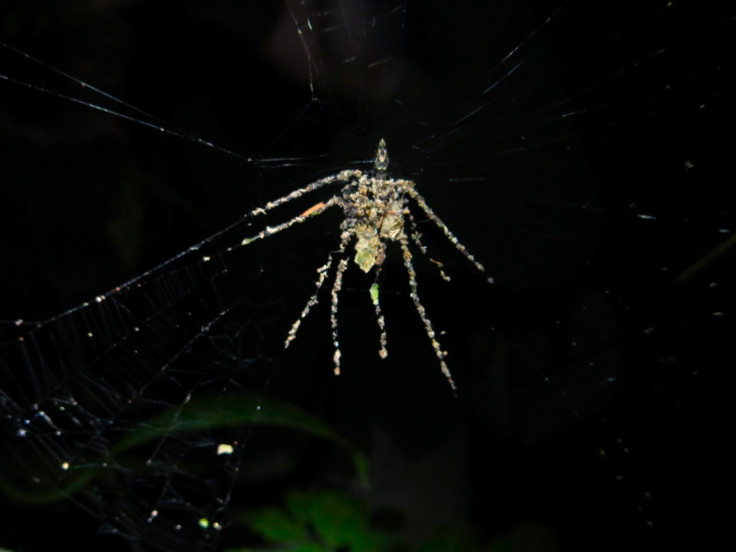Spider That Builds Larger-Than-Life Decoy "Spiders" Discovered in Amazon

A handful of spider species are known to weave complex patterns into their webs, but scientists exploring the Peruvian Amazon have discovered an arachnid that trumps them all: a spider that builds giant decoy "spiders" to hang in its web.
The newly discovered species in the genus Cyclosa creates the larger fake spider from dead insects, leaves and other forest debris.
While other sculpting Cyclosa spiders have previously been found, this particular spider is the first species discovered to build a copy "spider" complete with multiple, spider-like legs.
The fake spiders are believed to serve as decoys meant to confuse of distract predators.
Biologist Phil Torres, who divides his time between Southern California and Peru, where he is involved in research and education projects, stumbled across the spider's unusual behavior as he was leading visitors around a floodplain near Tambopata Research Center in Peru.
The tiny never-before-seen spider, which is only about 5mm in body length, is believed to hide behind or above their mock, bigger spider to either attract prey, or confuse predators that may try to eat them.
"It seems like a really well evolved and very specialized behavior," Torres wrote in a blog entry on Rainforest Expeditions.
"Considering that spiders can already make really impressive geometric designs with their webs, it's no surprise that they can take that leap to make an impressive design with debris and other things," he said, according to Wired magazine.
Torres said he had been showing visitors into a floodplain near a research center in Peru when he noticed something far away that looked like a smallish, dead spider in a web. He said that the thing looked flaky and resembled a fungus-covered corpse of a spider.
However, he noticed that the flaky spider started moving, and when he went closer to look he discovered the illusion, and just above the 1-inch-long fake spider crouched a smaller, quarter-inch long striped spider shaking its web.
Surprised by the discovery, Torres later contacted arachnid expert Linda Rayor of Cornell University in New York, who confirmed that the spider's behavior of sculpting of spider-shaped decoys has never been observed.
"I have never seen a structure just like this," William Eberhard, an entomologist at the Smithsonian Tropical Research Institute and the University of Costa Rica, told Wired. However, Eberhard noted that identifying the spider as new species based on their building behavior alone and without anatomical evidence is near impossible.
"Species are distinguished on the basis of the structure of the male and female genitalia," Eberhard said. "To a lesser extent, on the overall abdomen shape."
Torres has not given up, and he says he will return to the same area in January with a permit to collect specimens to help verify whether or not the small decoy builder is actually a new species.



























